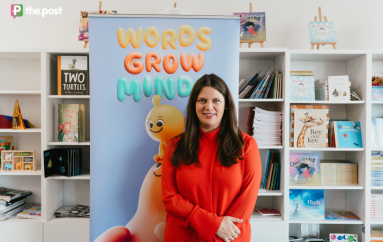The great COVID vanishing act
COVID-19 hasn’t gone away – far from it – but our political leaders are behaving like it has, with authorities obscuring data that was previously readily available, writes Matthew Abraham.


South Australian Premier Peter Malinauskas launching the AFL's Gather Round - an event which will almost certainly increase COVID infections. Photo: AAP/Matt Turner
Yesterday, upon the stair,
I met a man who wasn’t there.
He wasn’t there again today
I wish, I wish he’d go away.
Getting the latest version of everything is a modern curse.
I’m a sucker for it.
Whenever a new iOS update bobs up for the iPhone, I immediately hit install, even if it turns the happy mobile phone into a cranky, battery-draining beast.
Last week, I installed iOS 16.4.1 that promised “important bug fixes and security updates”, including fixing the “pushing hands emoji does not show skin tone variations” and Siri does not respond in some cases.
So, when an update dropped in for the mySAGOV app – the app that snooped on us all during the pandemic – I immediately tapped on it to explore what exciting new feature was on offer. A hospital ramping emoji, perhaps? Nothing so exciting.
“Mandatory COVID-19 contact tracing and check-in ceased in South Australia in November 2022,” it intones.
“Therefore, we’re removing the following functions from the app:
COVID safe check-in
Add/view COVID-19 vaccination certificates.”
Ah yes, COVID safe check-ins and vax certificates. They’re the things we needed when COVID was running riot and killed five South Australians in its first two years.
Good to know the pandemic’s over, then. It is, isn’t it?
The short answer to that is no, it’s not.
The long answer is that as far as our state and federal governments are concerned, our Premier Peter Malinauskas, his counterparts in every state and territory, and Prime Minister Anthony Albanese, COVID and its clever mutations has become like the man upon the stair in Hughes Mearn’s perplexing poem, Antigonish.
It’s the virus that wasn’t there, isn’t there again today, we wish, we wish it’d go away.
In 2023, the official political status of the coronavirus pandemic has silently shifted from paranoia and stifling state control of every aspect of our lives to the who-gives-a-rats phase.
You’ll now rarely hear our elected leaders utter the word COVID. Gather Round has a much nicer ring to it.
They rarely urge people to get vaccinated. You never see them wearing masks, unless they’re inspecting a biscuit factory.
Hand on hearts, they’ll plead with us to drive safely over Easter. Yet the road toll, dreadful as it is, can’t hold a candle to the busloads of Australians dying every week from COVID or its complications.
In the past year, COVID has zoomed up the sorry rankings for the leading causes of death in Australia.
It’s gone from 34th place in 2021 to number three as our biggest killer, sitting behind ischaemic heart disease – the starving of blood and oxygen to the ticker – and dementia. In the space of a year, COVID has elbowed out the other big mortalities – stroke, lung and colon cancer, lower respiratory disease and diabetes.
These are the findings of the Actuaries Institute’s delightfully named COVID-19 Mortality Working Group.
Actuaries are the brainiacs who use data, maths and spreadsheets to calculate how long we’re likely to live – handy information for insurance companies, health funds, superannuation boards, businesses and governments. They perform a valuable role – just don’t get stuck next to one on a flight over Antarctica.
The working group trawled through the latest Provisional Mortality Statistics from the Australian Bureau of Statistics, covering deaths last year prior to November 30 and registered by January 31 this year.
It expects that “excess mortality” for the full year in 2022 will be up 12 per cent, or nearly 20,000 more deaths last year “than would have been expected if the pandemic had not happened”.
Just over half of the expected excess mortality for 2022 is due to deaths from COVID-19 – an increase of 10,300 deaths – with another 2900 deaths where COVID-19 was a “contributing factor”. The remaining excess of 6600 deaths had no mention of COVID-19 on the death certificate.
“While most and the remaining of the excess deaths are in older age groups (that is 65 plus years), excess mortality is a significant percentage in all age groups in 2022,” the working group says.
We seem fascinated by the question “did they die from COVID or with COVID” – as though it’s not so bad if a person was old and sick and just happened to have COVID when they died.
The actuaries shoot this false distinction down.
“It is unclear how many people who died with COVID-19 would have died during this period anyway, and how many may have had their death hastened by COVID-19,” they report.
“However, given that with COVID-19 deaths follow the same peaks and troughs as from COVID-19 deaths, and that with COVID-19 deaths are only counted as such if COVID-19 is considered to have contributed to death, it seems that COVID-19 is a catalyst for with COVID-19 deaths, rather than being merely coincidental.
“We note that the same traditionally happens with the winter peak of respiratory disease deaths.”
In other words, if you’re crook, COVID will give you a big shove out the door.

A year ago, the Premier was taking COVID precautions. Photo: Tony Lewis/InDaily
Nobody in their right mind would wish for a return to the crushing, depressing lockdowns, limits on hospitality numbers, compulsory face masks, and the many other draconian rules imposed by Police Commissioner Grant Stevens and SA’s Chief Public Health Officer, Professor Nicola Spurrier, to confront and contain the pandemic.
They were given a job to do by then Premier Steven Marshall and boy, did they do it.
For the more than two years of South Australia’s longest state of emergency – the previous record had been four days during bushfires – they kept us safe from COVID and saved lives.
But it feels like we have now lurched from an overkill of understandable caution to an inexplicable state of official relaxation.
Older and vulnerable Australians are at least being advised to get the latest vaccination.
My wife and I are booked for our fifth COVID jab next week, along with the flu shot, the earliest appointment we could get at our local GP clinic after booking weeks ago.
So, how’s the whole COVID vaccination thing going? It’s become a bit of a mystery.
While almost 95 per cent of eligible South Australians have received their first dose of the vaccine and 92 per cent their second dose, vaccination rates struggled to get far beyond the mid-60 per cent range for the third jab.
But trying to track down the specific figures for the third and fourth jabs took me from Health Minister Chris Picton’s office, to SA Health’s media team, to the Commonwealth Health Department’s media office.
SA Health says it stopped collecting data for the COVID vaccine booster shots at the start of this year.
That explains why the SA Health COVID online dashboard hasn’t posted figures for the third and fourth shots but says “boosters have been administered to 67.9 per cent of eligible South Australians and 55.7 per cent of South Australians aged 16-plus”.
The Commonwealth health department replied it has “changed the way COVID-19 vaccinations are reported”, in line with the new Australian Technical Advisory Group on Immunisation (ATAGI) recommendations in February.
It referred InDaily to the department’s website that does not show the third and fourth jab percentages.
What’s very clear from the graphs on the Commonwealth website, however, is that the number of doses administered by month since the start of the vaccine rollout peaked in September 2021 and again in January last year, and since then has fallen off a cliff.
A third email lobbed from the Commonwealth with a link to “historical information” and here I eventually found an Excel spreadsheet that revealed – on line 259 of the data – that the number of South Australians aged 16 and over who’ve had the fourth dose is 433,275.
Why bury the numbers so deeply? Is it because the total vaccination rate is embarrassing?
I’m no actuary, but out of SA’s total population of almost 1.8 million, it looks like well under 50 per cent of us are fully vaccinated against the highly-transmissible Omicron and spin-off COVID variants, and most of those will be over-65s.
And it’ll be even lower for Jab Number Five.
If “herd immunity” is kicking in where vaccines left off, why have we seen a surge of cases after the Mad March festivals?
The AFL Gather Round will boost tourism and the local economy. On the track record to date, it’ll also boost COVID cases, and probably deaths.
You’ll be OK if you don’t touch the ball. But you’ll be even better off if you are fully vaccinated.
Professor Spurrier once described COVID as a sneaky virus and she’s right. Wishing it wasn’t there won’t make it go away.
Matthew Abraham’s political column is published on Fridays. Matthew can be found on Twitter as @kevcorduroy. It’s a long story.




